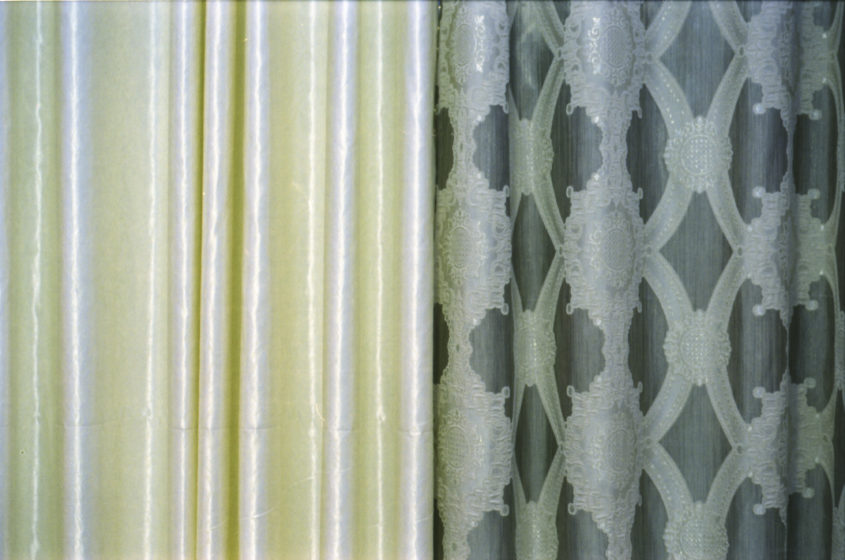Non aprire che all’oscuro
I / II / III

Non aprire che all’oscuro
di Emanuela Laurenti e Francesca Maceroni.
Einstein diceva: “Che ne sa un pesce dell’acqua in cui vive per tutta la vita?”.
L’Albania comunista ricorda un acquario. Un posto chiuso, una scatola di vetro in cui nuotavano ignari gli abitanti. Henver Hoxha, in capo alla dittatura di matrice stalinista per quarant’anni, aveva isolato politicamente e mediaticamente il paese. La propaganda governativa propinava scenari apocalittici all’esterno e dipingeva la terra delle aquile come ultimo baluardo di civiltà. Gli oppositori politici venivano rinchiusi e torturati, l’economia diveniva sempre più autarchica, la popolazione si vedeva privata dei propri diritti e delle proprie libertà civili. La nazione si era trasformata in un avamposto dell’incubo paranoico del presidente che aveva fatto costruire circa cinquecentomila bunker convinto di un’imminente invasione del blocco occidentale. La situazione si era, poi, aggravata a causa della rottura con l’Unione Sovietica di Chruščëv e dal conseguente timore di ritorsioni.
Alla sua morte, nel 1985, Hoxha lasciava un paese profondamente povero e senza prospettive, con livelli di disoccupazione e arretratezza sociale altissimi. Mentre il neoeletto Gorbačëv portava l’U.R.S.S. verso la perestrojka, Ramiz Alia saliva al potere in Albania e tentava di mettere in atto riforme socio-economiche con estremo ritardo.
Nel 1991 – a un anno dall’assalto delle ambasciate straniere, finalmente riaperte, per fare richiesta di asilo politico – una decina di migliaia di persone salivano su barconi precari per attraversare l’Adriatico e approdare sulle coste pugliesi. Partivano dai porti di Durazzo e Valona alla ricerca di un futuro migliore, sognando l’Italia idealizzata che le trasmissioni Rai disegnavano.
Il muro di Berlino era caduto. La guerra fredda era appena finita. Nella vicina Yugoslavia stava per scoppiare una feroce guerra. I disperati che attraversavano il mare per fuggire dalle miserie del regime totalitario comunista venivano accolti a braccia aperte. Riuscivano, finalmente, ad aprire le porte. Stavolta, alla luce.
Quasi trent’anni dopo, siamo andate a vedere quali fossero gli effetti di tutto ciò. Per comprendere meglio il fenomeno epocale dei grandi flussi migratori degli ultimi tempi e, soprattutto, della post-migrazione.
——————————————————————————————————————–
Non aprire che all’oscuro
Project by Emanuela Laurenti e Francesca Maceroni.
Einstein used to say: “What does a fish knows about the water in which it lives all its life?”.
Communist Albania seems like an aquarium. A closed place, a glass box in which the inhabitants were swimming unaware. Henver Hoxha, head of the Stalinist dictatorship for forty years, had politically and mediately isolated the country. Government propaganda propelled apocalyptic scenarios outside and depicted the land of eagles as the last bulwark of civilization. Political opponents were locked up and tortured, the economy became increasingly self-sufficient, the population was deprived of rights and civil liberties. The nation had turned into a paranoid nightmare outpost of the president. He had built five hundred thousand bunkers fearing an imminent western bloc invasion. The situation was then aggravated by the break with the Chruščëv’s Soviet Union and the consequent fear of retaliation.
At his death in 1985, Hoxha left a country that was profoundly poor and without prospects, with very high levels of unemployment and social backwardness. While the newly elected Gorbachev carried the U.S.S.R.. towards the perestroika, Ramiz Alia came to power in Albania and tried to implement socio-economic reforms with extreme delay.
In 1991 – a year after the assault of foreign embassies, finally reopened, to apply for political asylum – about ten thousand people went up on precarious boats to cross the Adriatic Sea and land on the coast of Puglia. They departed from Durazzo and Valona ports in search of a better future, dreaming of the idealized Italy that Rai broadcasts were drawing.
The Berlin wall had fallen. The cold war was just over. A ferocious war was about to break out in the near Yugoslavia. The desperate people who crossed the sea to escape from the miseries of the communist totalitarian regime were welcomed with open arms. They finally managed to open the doors. This time, in the light.
Almost thirty years later, we went to see the effects of all this. To better understand the epochal phenomenon of the recent great migratory flows and, above all, of post-migration.